How to stop a dog from barking at people on walks?
Well, first thing to do is determine why the dog is barking at people.
Dogs bark at strangers during walks due to:
1. Excitement. “Hey! A person! I love people! Yay!”
2. Frustration (due to excitement). Not being able to reach that person fast enough due to being on a leash.
3. Protection or resource guarding. This often stems from fear & feeling the need to protect from the “threat.”
The most common reason dogs bark at people on walks is due to fear or feeling unsure. The dog could be afraid of new people or certain types of people (children, people on bikes, men, people wearing hats). Or, the dog could simply be startled easily by new things in general.
How to stop a dog from barking at people when walking
Since fear is the most common reason for a dog to bark at people, let’s use that as our example. My tips on how to stop a dog from barking at people are below. I always welcome you to leave your own in the comments.
If your dog is barking due to excitement, these tips should still be helpful.
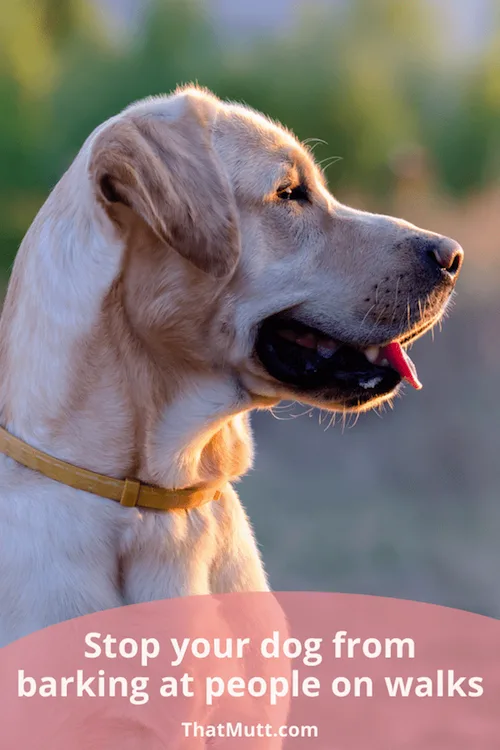
1. Make a list of your dog’s exact triggers. Be specific.
Try to pinpoint exactly when your dog reacts to people. For example, Honey barks at men wearing hats or tall men once they are 10 feet away. Or, Bentley barks at children once they are 15 feet away, especially if they are running or on bikes.
Your dog might have 5 or 6 different triggers. Brainstorm with family members or roommates so you get the most accurate list.
2. Find a highly valued food reward your dog loves.
Dry dog biscuits might not cut it. You may need to use hot dogs, string cheese, pieces of real steak or hamburger. For actual dog treats, I find that Wellness Well Bites work well for most dogs. For others, a squeaky toy or a ball might work better.
Find something your dog is willing to work for even under stress (but you’ll be working just outside of when your dog is normally “triggered”). Ideally, you’ll find something that can be broken easily into little pieces.
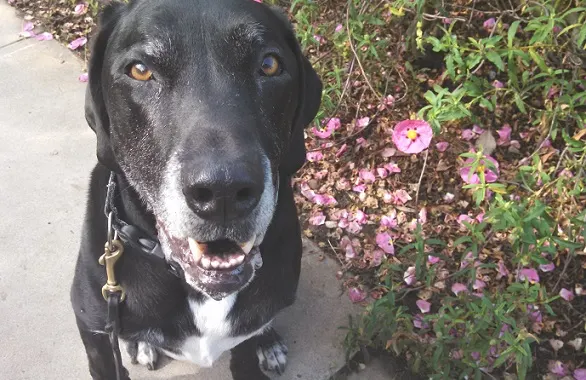
3. Use the right training collar & walk your dog at your side.
The best training collar or harness will be different for each dog depending on all sorts of factors like your own comfort level, the size of your dog and what makes it easiest for you to control your unique dog.
Some options include a martingale collar or a Gentle Leader. See more details on different training collars at the end of this article.
The reason the right training collar is important is so you have control over your dog and can prevent pulling and lunging.
I also recommend you keep your dog at your side with little slack in the leash. This is not about being “dominant” but simply if you have your dog at your side he will be easier to control. You won’t have to “reel him in” if you come across a trigger.
He’ll also generally be calmer if he’s at your side and less likely to be out in front ready to “protect” you.
4. Work with your dog on basic commands under her threshold to prevent barking at strangers.
Head out for a walk with your dog using your dog’s training collar and treats. Seek out her “triggers” but stop just far enough away so she doesn’t bark or react. Shower her with the treats.
Then, TURN AND LEAVE before you get close enough to trigger a reaction.
You want her to be like, “Wait! Why are we leaving? I want more treats!”
Eventually, you want her to associate her “trigger” with treats instead of fear. Like, “Oh, kids on bikes! That’s great! Where’s my string cheese?”
The goal is to change her emotional response over time.
Here is an article specifically for apartment complexes if you live in a busy, congested area.
*Enjoying this article? Get realistic dog training tips emailed once a week. Click Here
5. Make sure you do not rush your training.
Very slowly increase the challenge over several weeks. Give your dog time to build the confidence he needs to be calm around strangers.
6. Enroll in a group obedience class to prevent your dog’s barking at strangers.
Do this so that your dog learns to work and focus on you around distractions. The controlled environment with understanding people is helpful!
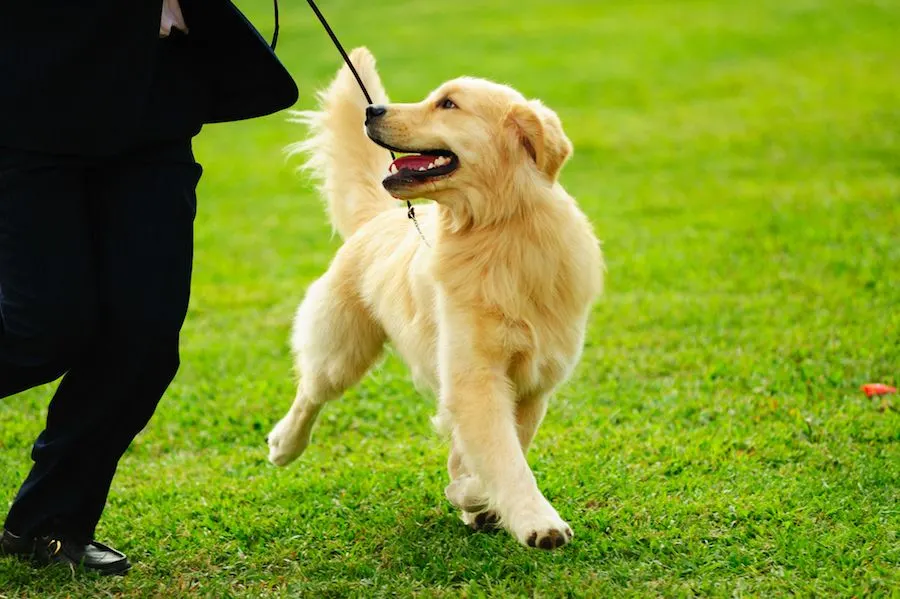
7. Work on obedience training in general to stop your dog from barking at people.
This builds confidence and trust.
It’s also a great way of building and strengthening the bond between yourself and your pup.
8. Order the book “Feisty Fido” by Patricia McConnell.
It’s a short little book that goes over a desensitization guide in detail in a step-by-step format. Such a simple concept (a little more challenging to actually do) but oh so helpful! I highly recommend it.
9. Use a dog backpack to stop your dog’s barking.
It gives your dog a job to do and helps him build confidence. Additionally, it also offers an increased level of physical activity that helps tire him out and makes him less likely to bark. We recommend Ruffwear’s packs.
Backpacks come in varying sizes and are available for small dogs all the way up to extra large pups.
Most come with zip-able pockets on each side that you can fill with water bottles, toys, treats, first aid items, or anything else that adds some weight.
Backpack pockets for smaller dogs can be a bit trickier to fill than the ones for larger pups because they obviously are limited in what they can hold size-wise, so you may just have to fill those with small sand bags.
You can find backpacks in different price ranges at many pet retail stores as well as on Amazon.
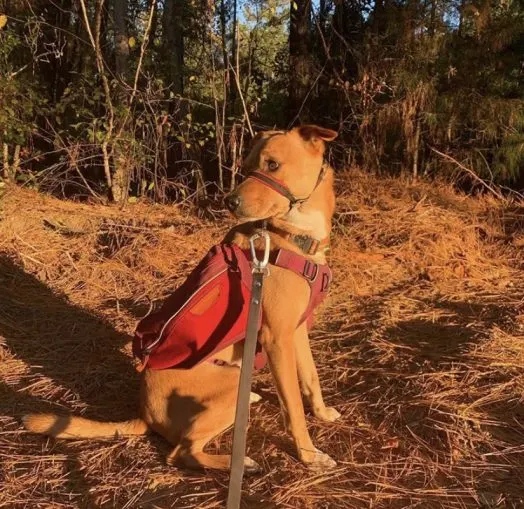
10. Train “watch me” or “look” with no distractions.
This teaches your pup to focus on you when you give him the command. It’ll come in handy when you need to redirect his attention when he’s about to start barking at people on walks.
When he makes eye contact with you, praise warmly and offer him a high value training treat or a favorite toy for listening to you. Good boy!
Using a clicker can also help to “mark” the exact moment your dog looks at you. It’s certainly not a requirement but can really help speed up your dog’s learning.
Start training the “watch me” command with no distractions around. This can be inside your home, your fenced-in backyard, in an empty parking lot in your car, etc. You get the idea.
Once your pup reliably listens to the command in an area with no distractions, you can slowly start incorporating some.
*Enjoying this article? Get realistic dog training tips emailed once a week. Click Here
This could be when you’re at a distance from a school bus stop where kids and/or parents are waiting, during less busy times at a park, or at a drive-through bank or restaurant. Essentially anywhere with slightly more distractions.
11. Recruit a friend to be a nonthreatening “stranger.”
The next training level can involve a friend your dog is somewhat familiar with. Ask your friend to ignore your pup and simply walk calmly next to you. That’ll decrease your dog’s level of excitement and will make him less likely to bark on the walk.
Remember that practice makes perfect, so do this on a regular basis to improve your pup’s reaction to people on walks. Just once per week probably won’t help a lot, so several times per week will yield quicker results.
12. Know how to do a quick “u-turn” with your dog to get away as needed.
Sometimes, there’s no space to avoid other people and it’s best to just turn around and walk the other way.
This is easiest to teach when your pup walks right next to you instead of ahead of you. Make a smacking sound with your lips so that your dog focuses on you, then ask him to “look” at you, followed by doing a 180° turn with your pup.

This is the best way of getting your dog used to people (and other dogs). The more he’s used to having others around, the less inclined he’ll be to act up and bark at people on walks.
You can take him to dog-friendly stores or places like wineries and breweries, drive-throughs, your vet’s, friendly neighbors or family for this purpose.
Dog training collar options
Earlier we mentioned finding the best training collar option for your dog. Here are some more details on each of these types of collars. You probably want to try two or three different types to find what works best for your specific pup.
1. Halti/Gentle Leader
Haltis and Gentle Leaders are head collars that give you a lot of control over your dog’s movement. They’re comparable to a horse halter and are worn around a dog’s muzzle and close behind their ears.
They’re great to guide the dog’s head away from distractions such as other people, dogs, bikes, or small critters they perceive as prey.
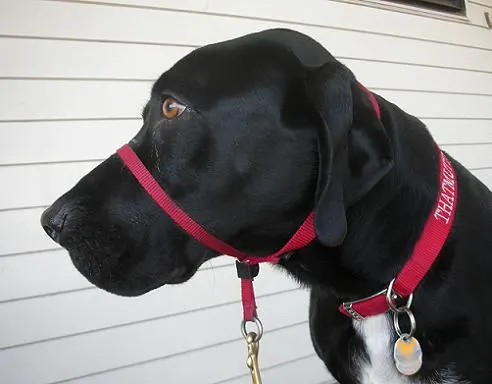
Pros of the Gentle Leader
- Gentle and effective training tool
- Great for reactive dogs
- Good alternative for people who aren’t comfortable using prong collars
Cons of the Gentle Leader
- May take some getting used to
- Not a good option for brachycephalic dogs (dogs with shortened nasal passages like pugs or bulldogs)
- Some people mistake head collars for muzzles
- They can jerk a dog’s head and neck around
- Can cause chafing on your dog’s muzzle if the noseband isn’t padded
- May restrict breathing/panting for extra strong pullers (Remy!)
Other articles on head halters:
2. No pull harness
No pull harnesses are designed to discourage pulling and to help you gain more control over your dog on your walks. They’re worn around a dog’s chest and have no attachment points around a dog’s neck or throat.
When the dog pulls, a no-pull harness is designed to gently move the dog’s chest and shoulders to the side.
Remy is wearing the Easy Walk no pull harness in this picture:
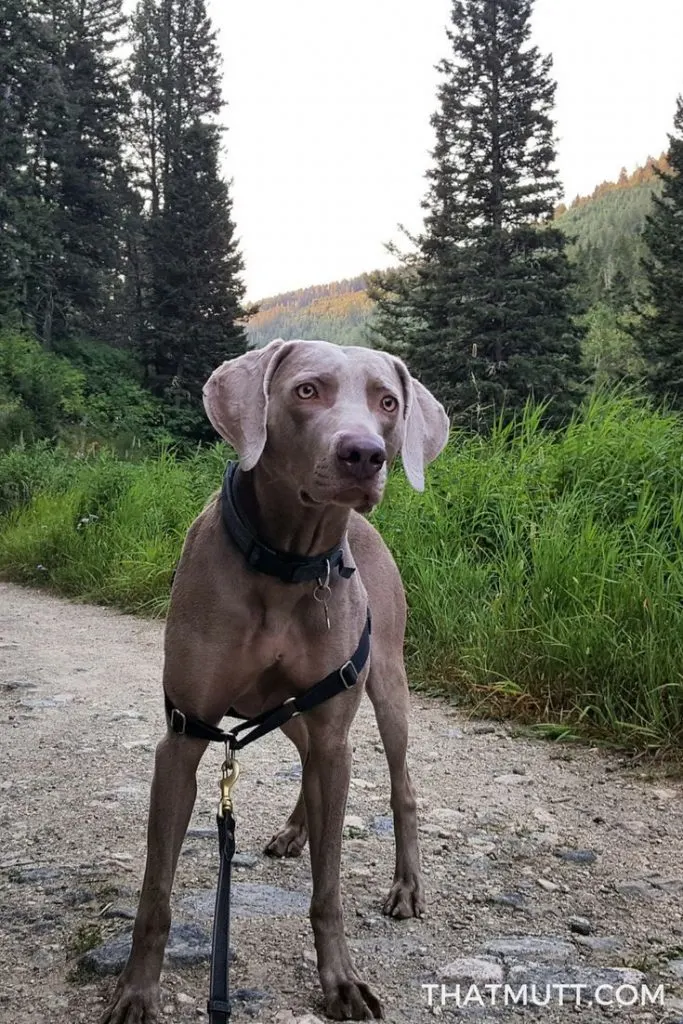
Pros of a no-pull harness
- Less pressure or no pressure on the dog’s neck
- Gentle training tool
- Great for teaching puppies polite leash walking skills
Cons of a no-pull harness
- Non-padded harnesses can cause chafing in the armpits, on the chest and on the belly
- Not an instant fix as it requires some getting used to
- Doesn’t work well for some strong pullers or dogs that lunge
- Some dog can twist out of certain brands
ORDER AN EASY WALK HARNESS HERE
Articles on no-pull harnesses:
3. Prong collars
Prong or pinch collars are chain collars that tighten around a dog’s neck when they pull. They have flat prongs that fit evenly around the collar.

Pros of prong collars
- Highly effective on strong pullers and lungers
- Needs to be fitted correctly to work
Cons of prong collars
- Can potentially cause damage to a dog’s throat area if used incorrectly
Order a Herm Sprenger prong collar here
Both my dogs have responded well to prong collars. Here’s an example of my dog Ace walking nicely in his prong collar in this video:
4. Martingale collars
Martingale collars are made of various materials like nylon, leather, or metal that consist of two loops. The larger loop slips around the dog’s neck, the smaller one clips to the dog leash.
They’re also known as humane choke collars or limited slip collars.
Pros of a martingale collar
- Slide on easily
- Escape-proof
- No choking effect
Cons of a martingale collar
- Don’t work well for strong pullers and lungers
Order a martingale collar here
5. Slip Collars
Slip collars made of different materials such as metal, nylon or rope. They tighten around a dog’s neck when they pull or when you tug on the leash.
Pros of a slip collar
- Slip on easily
- Escape-proof
Cons of a slip collar
- They could potentially hurt a dog’s neck when used incorrectly
Order a Herm Sprenger slip collar here
What would you add to this list?
How would you stop a dog from barking at people when going for a walk?
*Enjoying this article? Get realistic dog training tips emailed once a week. Click Here
Related articles:
- How to manage your reactive dog
- Stop dog’s barking at other dogs on walks
- Gentle Leader vs Halti
- Gentle Leader vs. prong collar
Lindsay Stordahl is the founder of That Mutt. She writes about dog training, dog exercise and feeding a healthy raw diet.
Barbara Rivers contributed to this article. She writes regularly for That Mutt and is a blogger, raw feeder and former dog walker. She maintains the blog K9s Over Coffee.


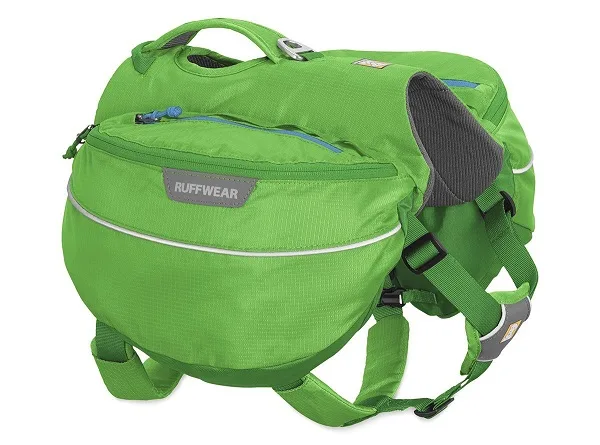
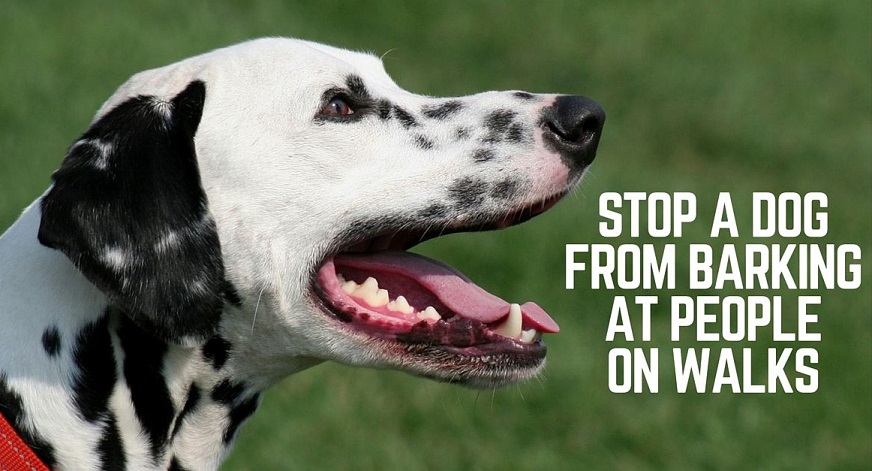
Mel
Monday 15th of May 2023
And how about suggesting a sincere apology to the hikers/walkers like me, who go out for walks to calm down, not get worked up by barking!
Is Board and Train Worth it? -
Thursday 23rd of February 2023
[…] is at the trainer’s home, then that allows more opportunities to work on house manners such as training the dog not to bark at people and not to jump on people, counter surf or get into the trash, […]
Is Board and Train Worth it? | VirarNews: Latest Virar News and Updates at Virality.bid
Wednesday 15th of February 2023
[…] is at the trainer’s home, then that allows more opportunities to work on house manners such as training the dog not to bark at people and not to jump on people, counter surf or get into the trash, […]
Is Board and Train Worth it? - NimasPark
Wednesday 1st of February 2023
[…] is at the trainer’s home, then that allows more opportunities to work on house manners such as training the dog not to bark at people and not to jump on people, counter surf or get into the trash, […]
JA
Friday 12th of July 2019
I have a dog who is friendly with 99.9 % of people.
For my dog - his triggers are people who are nervous of him or displaying strong emotions such as anger and people who do not react in a way he expects (such as drunk people).
How can you train against other peoples emotional states? the only good thing is - if he does not get close enough to people to pick up on their emotions he is perfectly fine. Extreme anger/ rage in a person he can sense from further away. But we have only had this issue with two people in his life.